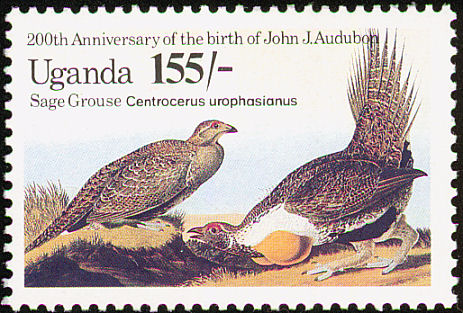Agriculture, oil and gas exploration and other human activity have reduced Alberta’s sage grouse (Centrocercus urophasianus) population to about 50 birds. Once ranging as far north as Empress, Alta., sage grouse are now found only in the southeastern corner of the province, south of the Cypress Hills. Saskatchewan populations have had a similar fate, with grouse found in a small southwestern region in the Frenchman River valley and Grasslands National Park. “The sage grouse population decline has been severe,” said Alberta Fish and Wildlife biologist Joel Nicholson, noting most of the remaining North American population now lives in Montana and Wyoming. “We’re at a situation in Alberta now where we likely have 50 or fewer grouse, total population, and so we need to do some really significant immediate actions to prevent this population from becoming extirpated in Alberta.”
Nicholson recently told a Wildlife Society-sponsored Wildlife in the Wind lecture series about efforts to reintroduce sage grouse in attempts to stave off complete loss until solutions can be found.
“The translocation of sage grouse into Alberta is only viewed as a temporary solution and we know that we must do concurrent habitat reclamation and enhancement on the landscape to keep sage grouse over the long term,” he said.
Birds captured in Montana were released at several southern Alberta locations in 2011 and 2012, with limited success.
In 2011, weather resulted in only nine hens being captured and released.
In 2012, 29 hens and three cocks were released, most of them fitted with transmitters so biologists could track their movements and survival.
After release, the grouse typically explore their new area in widening circles. Nicholson showed a map of one bird’s movements that took it into two provinces and one state, for a total of 1,019 kilometres in a three-month period.
Two of eight released hens nested In 2011 and 11 did so in 2012. However, only one of the nests survived to brood stage because of depredation from coyotes, ravens and crows.
In 2013, only four of the eight hens being tracked had nests, and two of those broods survived.
“This is a little bit troubling in that other translocations have shown that after the initial year, the translocated hens typically behave like the resident birds and we should have had 100 percent nest initiation.”
University of Regina masters student Kayla Balderson is studying the structures and activities in sage grouse range that seem to prevent the translocated birds from permanent habitation.
She has found that grouse won’t live within 150 metres of farm buildings or 650 metres of electrical lines. In addition, they avoid areas within one to two km of well sites, and there are many in their remaining range.
Oil and gas structures discourage grouse, which are extremely sensitive to noise and avoid tall structures that could house predators.
Balderson said more data on avoidance distances could help the government and energy companies better plan future development or provide guidelines for removing abandoned wells to improve habitat.
“We’ve got solid commitments for reclamation of 50 some well sites over the next two years, all of which are in our better sage grouse habitat,” added Nicholson.
He said oil exploration in large areas of habitat in southeastern Alberta is not being allowed unless companies can show how the projects will protect the grouse.
Source: The Western Producer, 14 November 2013
http://www.producer.com/2013/11/grouse-numbers-dangerously-low/

- Log in to post comments
